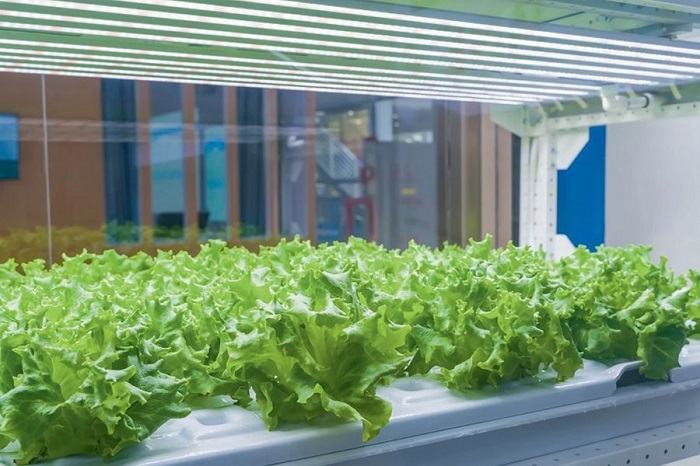When growing plants indoors, it is important to create optimal conditions for photosynthesis and growth. For this purpose, special fiot tapes are used. Phytostrips have become an integral part of growing plants indoors. They provide the necessary lighting for photosynthesis and plant growth at any time of the year. However, before choosing a phytostrip, you should carefully study their characteristics and advantages. Let’s figure out how to make the right choice of phytotape for your garden or vegetable garden.
Content:
- Type of LEDs
- The spectral composition of light
- Power and coverage
- Energy efficiency and duration of work
- Conclusion
1. Type of LEDs
Light emitting diodes (LEDs) play a key role in the functioning of phytostrips, as they emit the light necessary for photosynthesis and plant growth. When choosing a phytostrip, it is important to understand the different types of LEDs and their properties:
- Red LEDs : Red LEDs promote photosynthesis and flowering of plants. They effectively stimulate growth and development, particularly during flowering and fruiting.
- Blue LEDs : Blue LEDs are responsible for healthy plant growth and leaf formation. They provide energy for photosynthesis and contribute to the formation of compact and healthy plants.
- White LEDs : White LEDs are often used for balanced plant lighting. They combine different spectrums of colors, which helps plants to provide the necessary in all aspects of photosynthesis and growth.
In addition, there are other types of LEDs, such as green and yellow, which can also have some effect on plant growth and development. When choosing a phytostrip, it is important to consider the needs of specific types of plants and the optimal spectrum of light for their health and growth.
2. The spectral composition of light
The spectral composition of light determines which colors of light are present in the phytostrip and how they affect the growth and development of plants. Plants use different colors of light for different physiological processes, so it is important to choose phytotape with the correct spectral composition. Here’s more about the different components of the light spectrum:
- Red light (660-680 nm) : This range promotes photosynthesis, flowering and fruiting of plants. It is essential for stimulating growth and development, particularly in the flowering phase.
- Blue light (440-460 nm) : Blue light is responsible for healthy leaf growth and stimulates photosynthesis. It is especially important in the early stages of plant growth, helping them to form a strong root system and leaves.
- Green light (500-520 nm) : Although green light has less effect on photosynthesis, it is important for the proper development of plants, as it helps them adapt to external conditions and use light optimally.
- Yellow light (580-590 nm) : Yellow light has a weaker effect on plant growth, but it can have a positive effect on photosynthesis and energy metabolism.
In addition to primary colors, phytostrips may also contain other spectral components, such as ultraviolet and infrared light, which may also affect physiological processes in plants. When choosing a phytostrip, it is important to pay attention to the spectral composition of light and its correspondence to the needs of specific plants in different phases of their growth and development.
3. Capacity and coverage
The power and coverage of the phytostrip play an important role in providing effective lighting for plant growing. Here’s what you should consider when choosing a phytotape:
- Power : The power of the phytostrip is measured in watts (W) and indicates the amount of energy it consumes. Determine how much power your plants need based on their needs and requirements. Usually, for small plants such as seedlings or houseplants, phytostrips with a power of 15 to 30 watts per square meter are sufficient. Larger plants or the flowering phase may require more powerful models.
- Coverage : The coverage of the phytostrip indicates how large an area it can illuminate. It is important to choose a phytotape with a coating that corresponds to the area of your cultivation. For example, if you grow plants on an area of 1 square meter, you may need a phytotape with a coverage of about 0.5-1 meter.
When choosing a phytotape, it is also important to take into account its efficiency, energy efficiency and duration of operation. Pay attention to the manufacturer and its reputation, as this can affect the quality and reliability of the phytotape. A properly selected phytostrip will provide your plants with the necessary light for healthy and productive growth.
4. Energy efficiency and duration of work
Energy efficiency and duration of work of phytostrips are important aspects that should be considered when choosing the optimal lighting for plants. Here’s what’s important to know:
- Energy efficiency : If you grow plants indoors, the energy efficiency of phytostrips becomes a key factor. More energy-efficient models will use less electricity, allowing you to reduce the cost of paying your electricity bills. Pay attention to the energy efficiency rating (for example, the coefficient of useful effect (Lumens per Watt)) and the energy efficiency class when choosing a phytostrip.
- Lifetime : Lifetime of a phytotape indicates how long it can work without needing to be replaced. This is important to consider, especially if you plan to grow plants over a long period, such as the winter season. Most of today’s phytostrips have a long service life, but it’s worth checking the manufacturer’s specifications for specific models.
To ensure optimal conditions for plants, it is important to choose phytotapes with an optimal combination of energy efficiency and duration of operation. This will help provide stable and efficient lighting for plants throughout their life cycle, reducing energy costs and ensuring their health and growth.
5. Conclusion
Choosing phytostrips for growing plants is an important task that requires careful analysis and consideration of various aspects. Properly selected phytostrips can significantly improve the yield and quality of plants, providing them with the necessary light for healthy growth and development.
When choosing phytostrips, it is important to pay attention to the type of LEDs, spectral composition of light, power and coverage, energy efficiency and duration of operation. Each of these aspects affects the ability of the phytostrip to provide plants with the necessary light in all phases of their growth and development.
Effective selection of phytostrips will help you succeed in growing plants at any time of the year and in any conditions. Consider the needs of specific plant species, as well as your own needs and limitations, to choose the optimal phytostrips that meet your requirements and capabilities.
Therefore, the choice of phytostrips is an important component of successful plant cultivation, which requires a careful approach and informed decisions. The information in this article will help you make the right choice and achieve the best results in your garden or vegetable garden.













Оставить коммент.